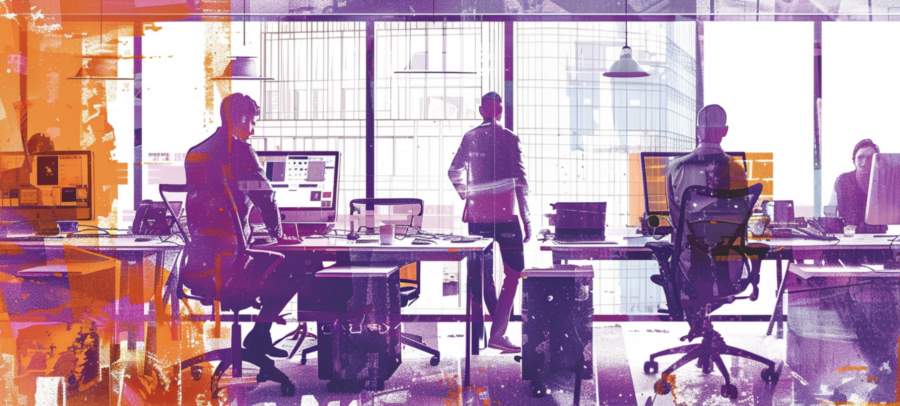The Philosophy of Flexibility
Why settle for a static setup when you can have an environment that shifts as quickly as your priorities? Agile offices are about creating spaces that mirror the fluidity of modern business practices. They’re the Swiss Army knives of the workspace world, ready to transform at a moment’s notice. From collapsible walls and mobile desks to modular seating, the agile office is designed for the ultimate in adaptability.Think about it: one day, it’s a collaborative hub for brainstorming sessions; the next, a quiet zone for deep focus. The day after that? Maybe a yoga studio or a pop-up cafe. The only limit is the creativity of those dwelling within.
Tools of the Trade: Furniture That Works as Hard as You Do
In the agile office, traditional desks and chairs are replaced with dynamic, multifunctional pieces. Adjustable height desks that encourage standing or sitting, wheels on everything that isn’t nailed down, and writable surfaces for capturing spur-of-the-moment brilliance. These aren’t just furnishings; they’re enablers of innovation.And let’s not forget the tech. From digital whiteboards that save your scribbles to the cloud, to advanced lighting systems that adjust based on the time of day or the mood of the meeting—technology in an agile office works to make life easier, not harder.
Zones for Collaboration and Solitude
The heart of the agile office lies in its zones. Rather than a one-size-fits-all approach, these spaces are tailored to the tasks at hand. Open areas with soft seating and movable tables encourage collaboration and easy communication. When it’s time to buckle down and focus, individuals can retreat to soundproof pods that offer peace and privacy.But it’s not all work and no play. Agile offices also recognize the importance of downtime. Quiet corners for meditation or relaxation, and spaces outfitted with comfy sofas and ambient lighting allow employees to recharge, ensuring they’re at their best when it’s game time again.
Designing for the Human Element
It’s not enough to fill an office with shiny gadgets and snazzy furniture—the space must also resonate with those who use it. Embracing a human-centered design means considering how employees interact with their environment on a physical, mental, and emotional level. A splash of greenery here, an art piece there, and perhaps a hammock or two can make the difference between a place you work at and a place you love to work at.The right environment not only boosts productivity but also helps in retaining talent. People are more likely to stick around if they feel their workplace understands and caters to their needs. It’s a little like dating—show them you care, and they’re more likely to commit!
Agility Beyond Physical Spaces
An agile office is more than just physical space—it’s a mindset. Encouraging agility means embracing change at every level, from management styles to project methodologies. It means building a culture where flexibility and innovation are not just encouraged but expected.Adopting tools like agile project management software can help teams keep up with the fast-paced changes. It’s about making sure that as your office space flexes, so do your work practices.
Evolving with Needs
As businesses grow and change, so too should their environments. An agile office is never static; it’s a living, breathing space that evolves. Regular feedback loops with employees—finding out what works and what doesn’t—ensure that the space grows in tandem with its occupants. After all, what’s the point of having a chess set if everyone wants to play Scrabble?Wrapping Things Up
In conclusion, the agile office is about creating a workspace that not only meets today’s demands but also anticipates tomorrow’s challenges. It’s about fostering an environment where flexibility and creativity lead to productivity and growth. So, the next time someone suggests rearranging the office, maybe don’t roll your eyes—it might just be the shake-up your team needs to find their next big idea.Article kindly provided by switchworkplace.co.uk

